For millennia a variety of North American bird species used bison hair during nest construction but when the “buffalo” was brought to the brink of extinction by hunters in the late 1800’s that resource was essentially gone. Today there are relatively few places where bison hair is available to birds and Antelope Island is one of them.
1/3200, f/5.6, ISO 800, Canon 7D, Canon EF500mm f/4L IS II USM, not baited, set up or called in
Recently I’ve spent many hours with a pair of Western Kingbirds on the island as the female constructed their nest (only the female of the species builds nests). For the first several days she brought in small twigs and grasses but there was an abrupt change in construction material when she began work on the lining of the inner cup of the nest.
1/3200, f/6.3, ISO 500, Canon 7D, Canon EF500mm f/4L IS II USM, not baited, set up or called in
At that point the preferred nesting material became bison hair. The 500+ bison on the island have recently completed shedding their heavy winter coats and their fur is a readily available resource as small clumps of it can be found stuck to fences, plants and posts all over the island. Bison hair makes an ideal nest liner for its insulating, softness and comfort qualities.
At first it was difficult to tell what she was using to construct the nest because she usually disappeared into the nest so fast that I couldn’t identify the material. But then I made a concerted effort to photograph her just as she landed and on my last day with her that material was usually bison hair. That morning I was able to get three very similar shots as she brought in three different loads of bison hair. Because her landing posture and wing position were the same in all three images I clipped her wings in all three shots but the nesting material can easily be identified. This first image has a golden glow because it was taken soon after sunrise and the light was very warm.
1/3200, f/7.1, ISO 500, Canon 7D, Canon EF500mm f/4L IS II USM, not baited, set up or called in
Twenty four minutes later I was able to get another shot where bison fur could be identified…
1/3200, f/7.1, ISO 500, Canon 7D, Canon EF500mm f/4L IS II USM, not baited, set up or called in
and a third one 66 minutes after that. In-between she made many other trips with nesting material but even though most of the time I couldn’t identify what it was I suspect that it was often bison hair.
1/2200, f/7.1, ISO 500, Canon 7D, Canon EF500mm f/4L IS II USM, not baited, set up or called in
Western Kingbirds aren’t the only species on the island to use bison fur for nesting material. Several years ago I photographed this Loggerhead Shrike struggling with bison hair for its nest (notice that the clump of fur is strung between its beak and its feet).
Bison hair obviously makes a wonderfully effective nest lining and in recent years several commercial enterprises have begun to offer bison hair for sale to bird lovers as nesting material. One of them is BisonNest out of Colorado. Their graphic designer actually contacted me about use of this shrike image in their advertising but in the end it didn’t work out.
Ron
Note: In preparing this post I was struck by the similarity in landing posture of the female kingbird in three of these images. In all three her wings, head, tail and feet almost look to be carbon copies of each other. That has me pondering the wonders of evolution that could produce such a splendid creature capable of negotiating this complicated maneuver repeatedly and so very well.
PS – Be careful out there today. It’s Friday the 13th!


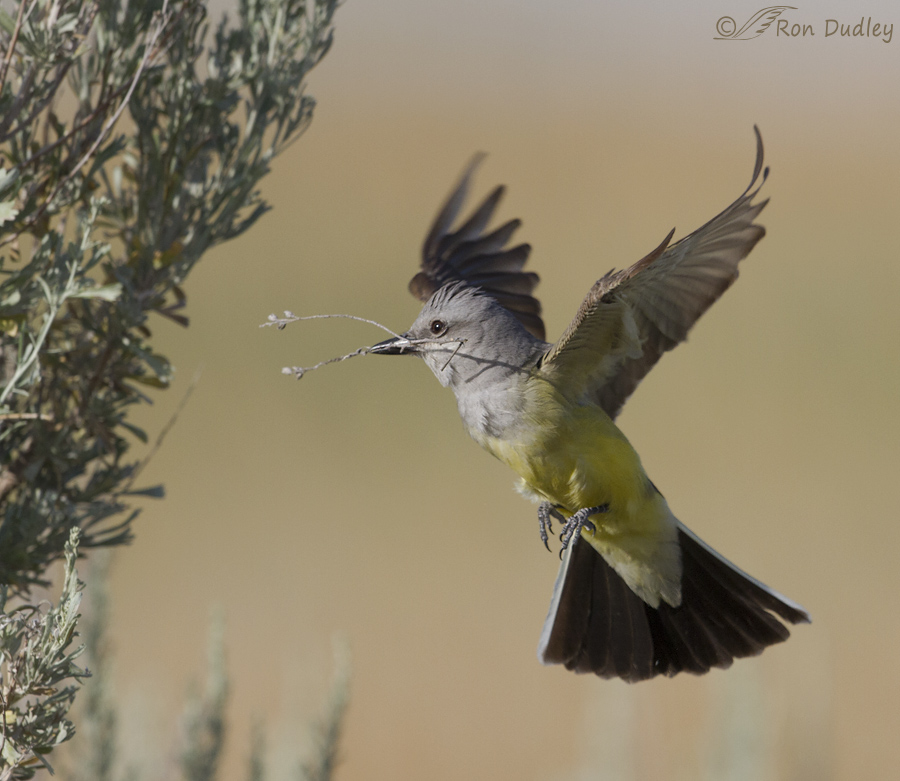
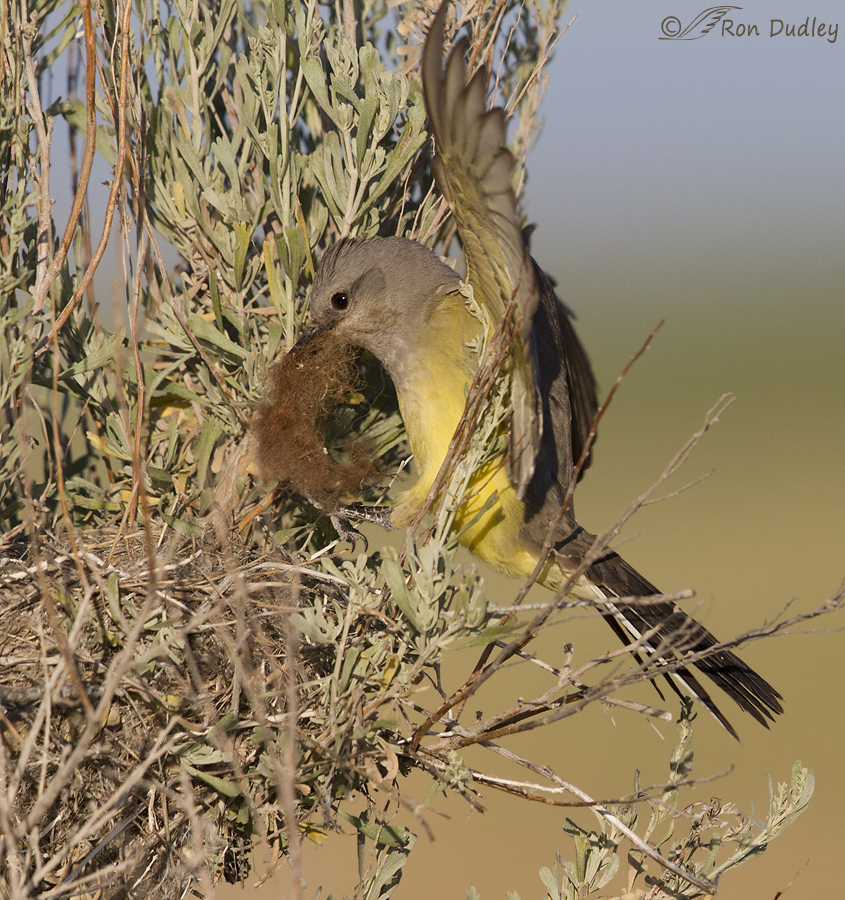
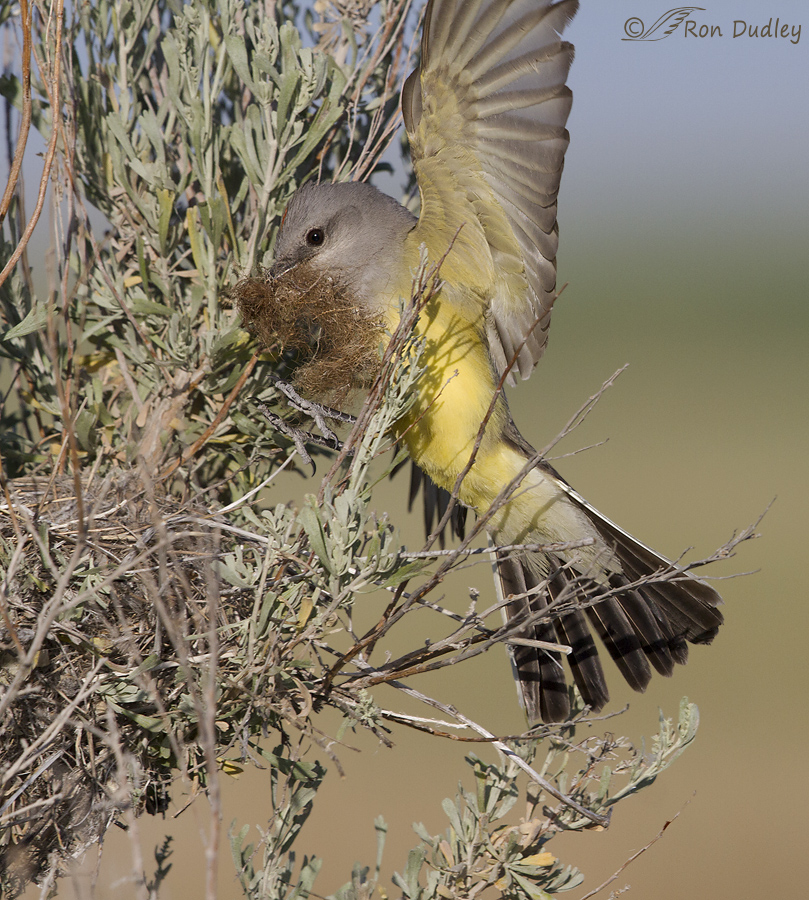
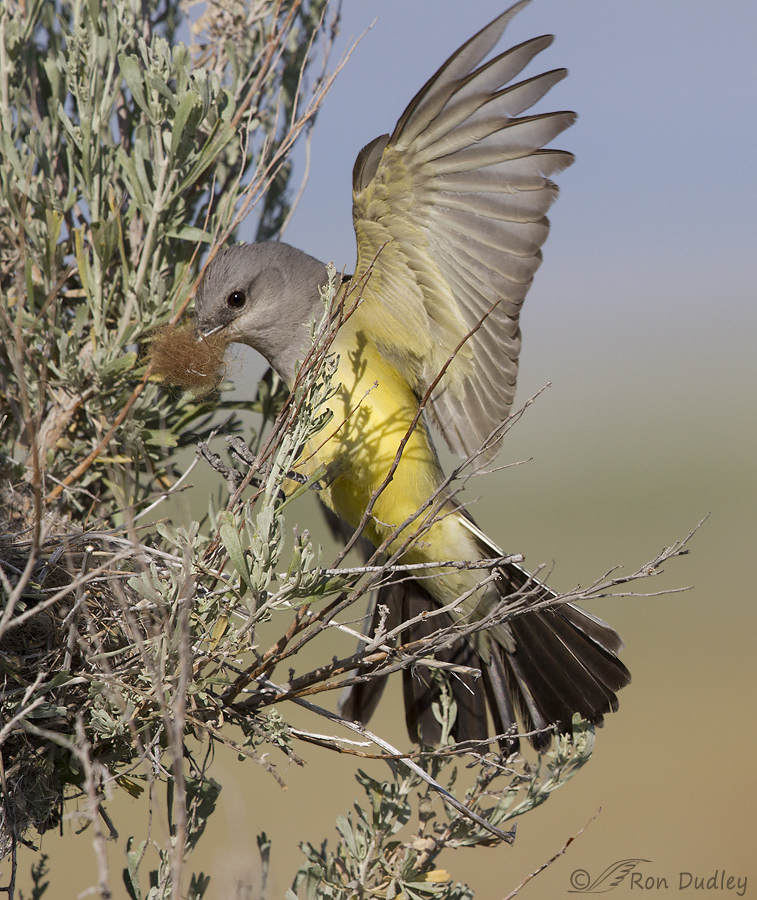
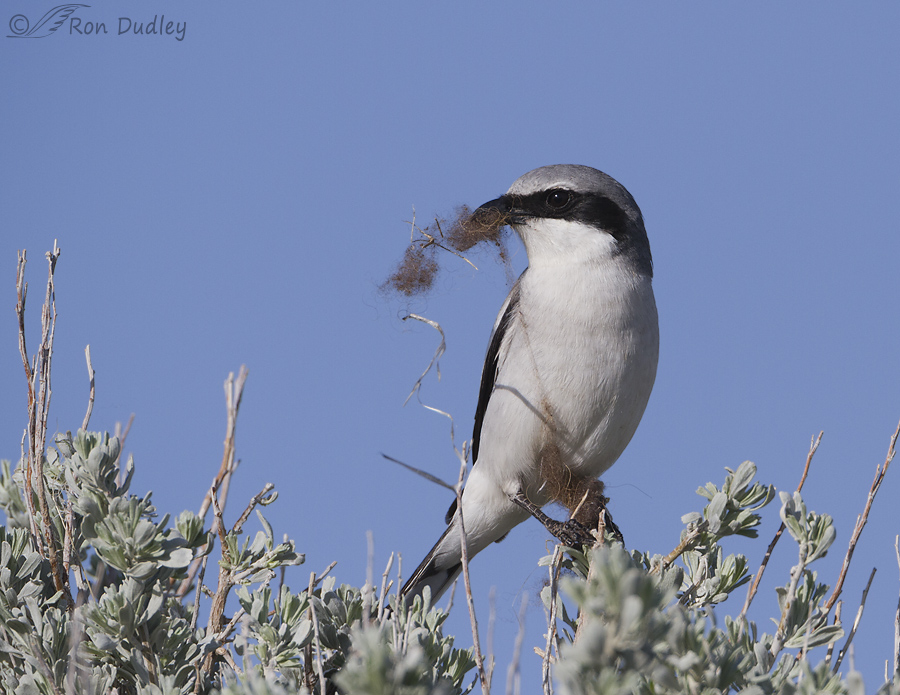
Our poor eastern birds have to settle for dog hair…at least there’s plenty if it! With two continually shedding Gold/Lab crosses and our 67 lb. “chihuahua”, we supply plenty of nesting material
Our dog,a German Shepherd and Chow mix, has way too much fur for our climate. My wife combs out the dog’s thick fur outside every few weeks, leaving balls of fine hair on the grass for the birds to use as nesting material. Takers in our yard include Carolina Chickadees and, to a lesser extent, Carolina Wrens.
Amazing series Ron and very interesting! Thanks for sharing!
Charlotte
My sentimental heart is melting this morning. So much care, so much industry. So much beauty.
I like your sentimental heart, Elephant’s Child…
Mama wants to be comfy! 😀 Buffalo rugs are just the thing.
Yup, she was very fastidious about getting that nest “just right”, Arwen.
What a wonderful, comfy lining that Bison hair must make! The similarities of the poses in these shots is interesting…I wonder of the raised crest in the first image indicates excitement at be able to bring such a big, soft clump to the nest. Years ago we had a huge buffalo robe that we used in the sleigh. It was so heavy we kids felt squashed, and could barely move, but it definitely kept us warm…it looks like the softer undercoat this lucky bird has found…
I’ve always suspected those robes must have been very heavy since their hides are so thick. Thank you, Patty.
Great shots Ron. I often see Bison hair for sale on birding sites. I have not purchased any. I usually put out 100% cotton in a suet feeder for the birds. I have some really funny pictures of different species with their mouths full of cotton which must make the nests so much more comfortable.
Ellen, I think I’ve seen similar scenes when birds have their beaks stuffed full of cottonwood fluff. Not to worry – typos fixed.
How wonderful! And what a testimony to the differing forms of intelligence, both innate and experiential, that leads to the Western kingbirds’ adroit landings and exquisite nests and your patience and proficiency in obtaining these photos. (Of course, the past massacre of bison – not so intelligent!) These photos give a great start to my day. Thanks!
Thanks, Alison. I love to contribute to the start of a nice day for my readers!
Great shots Ron, much appreciate your images and lessons!
I used to have a hanging suet feeder filled with moss, lichen and short pieces of string for nesting material. But Bison hair is a lot better. Since Bison used to roam parts of the east, wonder how long it would take for birds here to use it! I’ll have to think about that!!
I don’t think it would take any time at all, Dick. Sounds like an interesting project…